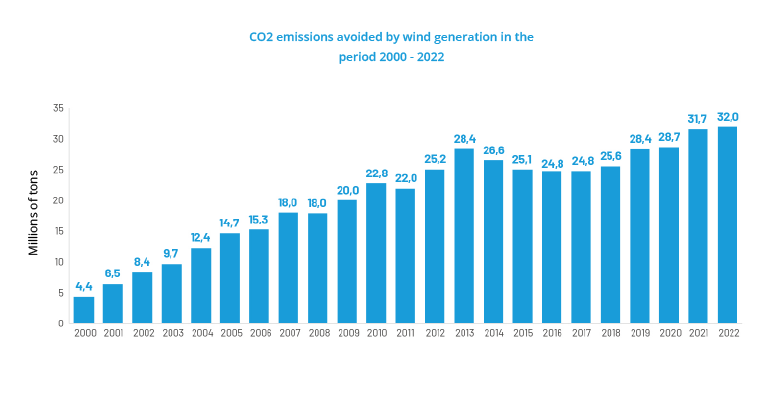Over the past two decades, the wind sector has not only emerged as a pillar of the global energy transition but also as a key fighter against climate change. Through wind power generation, we have managed to avoid millions of tons of CO2 emissions, significantly contributing to the protection of our planet.
Impact over time
Since the turn of the millennium, the ability of wind power to reduce CO2 emissions has shown impressive growth. In the year 2000, wind generation avoided the emission of 4.4 million tons of CO2. This number has progressively increased, reflecting the growth and maturation of the wind industry. To put this into perspective, here is a quick look at how CO2 emissions avoided thanks to wind power have evolved since 2017:
| 2017 | 24.8 million tons |
| 2018 | 25.6 million tons |
| 2019 | 28.4 million tons |
| 2020 | 28.7 million tons |
| 2021 | 31.7 million tons |
| 2022 | 32 million tons |
Recent evolution analysis
Between 2017 and 2022, the industry has managed to increase the reduction of CO2 emissions by 7.2 million tons. This growth is a testament to the continuous efforts by the wind sector to expand installed capacity, improve turbine efficiency, and integrate cleaner and more efficient technologies.
The cumulative impact
Since the year 2000, wind energy has avoided the emission of approximately 384 million tons of CO2. This number not only underscores the crucial role of wind power in reducing the global carbon footprint but also highlights its contribution to mitigating climate change and advancing towards more ambitious sustainability goals.
At TotalHSE, we are committed to promoting and developing wind energy, working towards a future where clean and renewable energy is the norm, not the exception.
